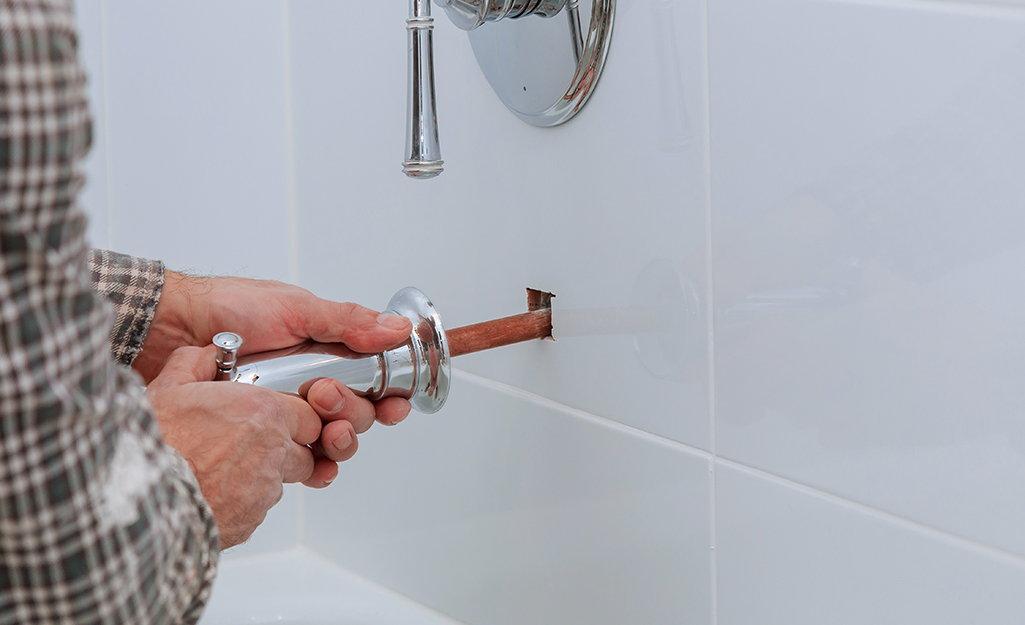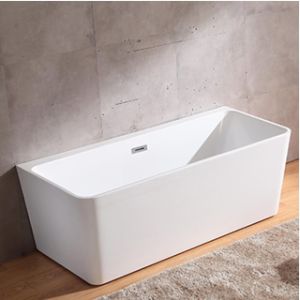Just How to Install a Bathtub in Your Bathroom
Just How to Install a Bathtub in Your Bathroom
Blog Article
In this article below you will find lots of awesome material all about How to Install a Bathtub Yourself.

Installing a bathtub isn't precisely rocket science, yet it does require strong plumbing, carpentry, and also often, tiling skills. Changing an old bathtub with a brand-new one is also a reasonably hard job. If the old bathtub is easily easily accessible, the project can relocate speedily; if you need to open a wall surface to remove the old tub and also position the brand-new bathtub, the job is much harder. In either situation, the project is within a house handyman's abilities, although you will require a helper to leave the old bathtub as well as embeded in the new one. Ensure you have actually qualified yourself for the task and also are comfortable trying it. As opposed to hiring a specialist to take control of a halfway-completed project, it is better to think about using one before you begin. Opportunities are you might need an expert plumber to make tube links.
This article will assist you set up a brand-new bathtub in your restroom if you have actually currently bought a new bathtub as well as do not require to change the plan of your previous water system pipelines.
Your tools as well as product list should comprise the following:
Removing Old Touches
If you require to replace old taps with brand-new ones as a part of your installation, then the first thing you ought to do is detach the water. After doing so, activate the taps to drain any type of water staying in the system. The procedure of getting rid of the existing faucets can be fairly problematic due to the restricted gain access to that is commonly the instance.
Make use of a container wrench (crowsfoot spanner) or a faucet device to reverse the nut that attaches the supply pipelines to the faucets. Have a towel all set for the remaining water that will come from the pipes. When the supply pipes have been eliminated, utilize the exact same tool to loosen the nut that holds the taps onto the bath/basin. You will need to stop the single taps from turning during this procedure. As soon as the faucets have actually been eliminated, the holes in the bath/basin will certainly need to be cleansed of any type of old securing substance.
Before moving on to fit the new faucets, contrast the pipeline links on the old faucets to the new taps. If the old taps are longer than the new faucets, after that a shank adapter is needed for the brand-new taps to fit.
Fitting New Taps
If the tails of the new faucets are plastic, after that you will certainly need a plastic connector to prevent damages to the string. One end of the adapter fits on the plastic tail of the faucet as well as the other end supplies a link to the existing supply pipes.
If you require to fit a monobloc, after that you will certainly need decreasing couplers, which connects the 10mm pipeline of the monobloc to the common 15mm supply pipeline.
Next, position the faucet in the placing hole in the bath/basin guaranteeing that the washing machines are in place in between the faucet and also the sink. Safeguard the tap in place with the manufacturer given backnut. When the tap is safely in place, the supply pipes can be attached to the tails of the taps. The taps can either be attached by utilizing corrugated copper piping or with normal faucet ports. The former kind must be connected to the faucet finishes first, tightening up only by hand. The supply pipelines can later on be connected to the various other end. Tighten both ends with a spanner after both ends have been attached.
Setting up the Bathtub
Utilizing the two wood boards under its feet, place the tub in the required placement. The wooden boards are helpful in equally spreading the weight of the bath tub over the location of the boards instead of concentrating all the weight onto four tiny points.
The following goal is to make certain that the tub is leveled all round. This can be accomplished by checking the level and readjusting the feet on the bathtub till the spirit level reviews level.
To mount taps, fit all-time low of the outermost flexible faucet connector to the ideal supply pipe by making a compression sign up with; then do the exact same for the other faucet.
Activate the supply of water and also inspect all joints and also new pipework for leakages and tighten them if necessary. Load the bathtub as well as additionally inspect the overflow electrical outlet and the typical electrical outlet for leaks.
Ultimately, fix the bathroom paneling as described in the maker's instruction manual. Tiling as well as securing around the bathtub must wait till the bathtub has been made use of at least once as this will certainly settle it right into its final setting.
Planning for the Installation
First of all, the sustaining structure supplied with the bath needs to be fitted (if required) according to the producer's directions. Next off, fit the faucets or mixer to the bathtub. When fitting the tap block, it is very important to see to it that if the tap includes a plastic washing machine, it is fitted in between the bathroom and the taps. On a plastic bath, it is likewise practical to fit a sustaining plate under the faucets unit to prevent stress on the tub.
Fit the adaptable faucet connectors to the bottom of the two taps utilizing 2 nuts and also olives (occasionally provided with the bathtub). Fit the plug-hole electrical outlet by smearing mastic filler round the sink electrical outlet opening, and then pass the outlet with the hole in the bath. Utilize the nut provided by the supplier to fit the plug-hole. Check out the plug-hole outlet for an inlet on the side for the overflow pipe.
Next off, fit completion of the adaptable overflow pipeline to the overflow outlet. After that, screw the pipe to the overflow face which should be fitted inside the bath. Ensure you use all of the supplied washers.
Attach the catch to the bottom of the waste electrical outlet on the bath tub by winding the string of the waste electrical outlet with silicone mastic or PTFE tape, and also screw on the catch to the electrical outlet. Attach all-time low of the overflow tube in a comparable manner.The bathroom must currently be ready to be fitted in its final position.
Tiling Around the Bathtub
In the area where the bath meets the tile, it is necessary to secure the accompanies a silicone rubber caulking. This is very important as the installation can relocate enough to break an inflexible seal, creating the water to permeate the wall surface between the bath and the tiling, leading to complications with wetness and also feasible leaks to the ceiling below.
You can choose from a selection of coloured sealants to blend in your fixtures and also installations. They are offered in tubes and cartridges, and can securing spaces up to a width of 3mm (1/8 inch). If you have a bigger space to fill up, you can fill it with twists of soaked newspaper or soft rope. Bear in mind to constantly fill up the bathtub with water prior to securing, to allow for the movement experienced when the bathtub remains in use. The sealer can split fairly very early if you do not think about this motion before securing.
Additionally, ceramic coving or quadrant tiles can be made use of to edge the bath or shower tray. Plastic strips of coving, which are easy to use and also cut to size, are additionally quickly available on the marketplace. It is advisable to fit the floor tiles utilizing water-resistant or water-proof adhesive and also cement.
Bathtub Installation
How Important Is A Bathtub To Your Home?
High-quality baths, showers, and other bathroom updates are necessary when considering a smart investment in your home. It’s a room that you go to every day and one that is constantly being used by guests.The bathroom is one of the top trafficked rooms in a home and also one of the most valuable in terms of home resale.
Install Piping Before Tub
You will be using your existing drain and waste vent system, but pipes required include the hot and cold water supply lines and a pipe leading to a shower head. A mixing valve and shower head are also needed. Air chambers may be required.
Position the Tub
Lower the tub into place so that the continuous flange fits against the wall studs and rests on 1’x4' or 2’x4' supports. Anchor the tub to the enclosure with nails or screws inserted through the flanges into the studs.
NOTE: Remember, bathtubs and shower stalls may require support framing. A bathtub filled with water is extremely heavy, so check building codes and framing support before installing the tub.
Assemble Drain Connections
Assemble the bathtub drain connections by connecting the tub overflow with the tub drain above the trap, not beyond it. The trap will have a compression fitting that screws over the arm of the overflow assembly.
Place a Pipe For the Shower Head
First, locate a brass female threaded winged fitting and attach it to a framing support via a screw or a nail. Then run a pipe up the wall for the shower head. Sweat or solder the other side of the brass fitting to the top of the pipe.
Attaching Hot and Cold Water Lines
Attach your water lines for both hot and cold by sweating these directly into the hot and cold ports of the mixing valve. The mixing valve will be how water enters the tub’s system, not by the pipes themselves.
Install the Spout
Extend a piece of 1/2 inch pipe, or whichever length is specified in the manufacturer’s instructions, for the tub spout. Sweat on a male threaded fitting at the end of the pipe or use a brass nipple of the proper length and a 1/2 inch cap.
NOTE: At this point you should have your rough-in plumbing work inspected before proceeding further.
Check For Leaks
Restore the water pressure and check the drain connection and the supply pipes for any sign of leaking.
estore the Bathroom Wall
Replace the wall with moisture-resistant drywall as a base for your wall covering. Seal the joints between the wall and your new tub with silicone caulk as protection against water seepage.
https://www.berkeys.com/2016/12/02/bathtub-installation-dallas/

I found that content about How to Install a Bathtub when doing a lookup on the web. Liked our entry? Please share it. Let someone else check it out. Many thanks for your time. Kindly come by our blog back soon.
Schedule Your Job Now Report this page